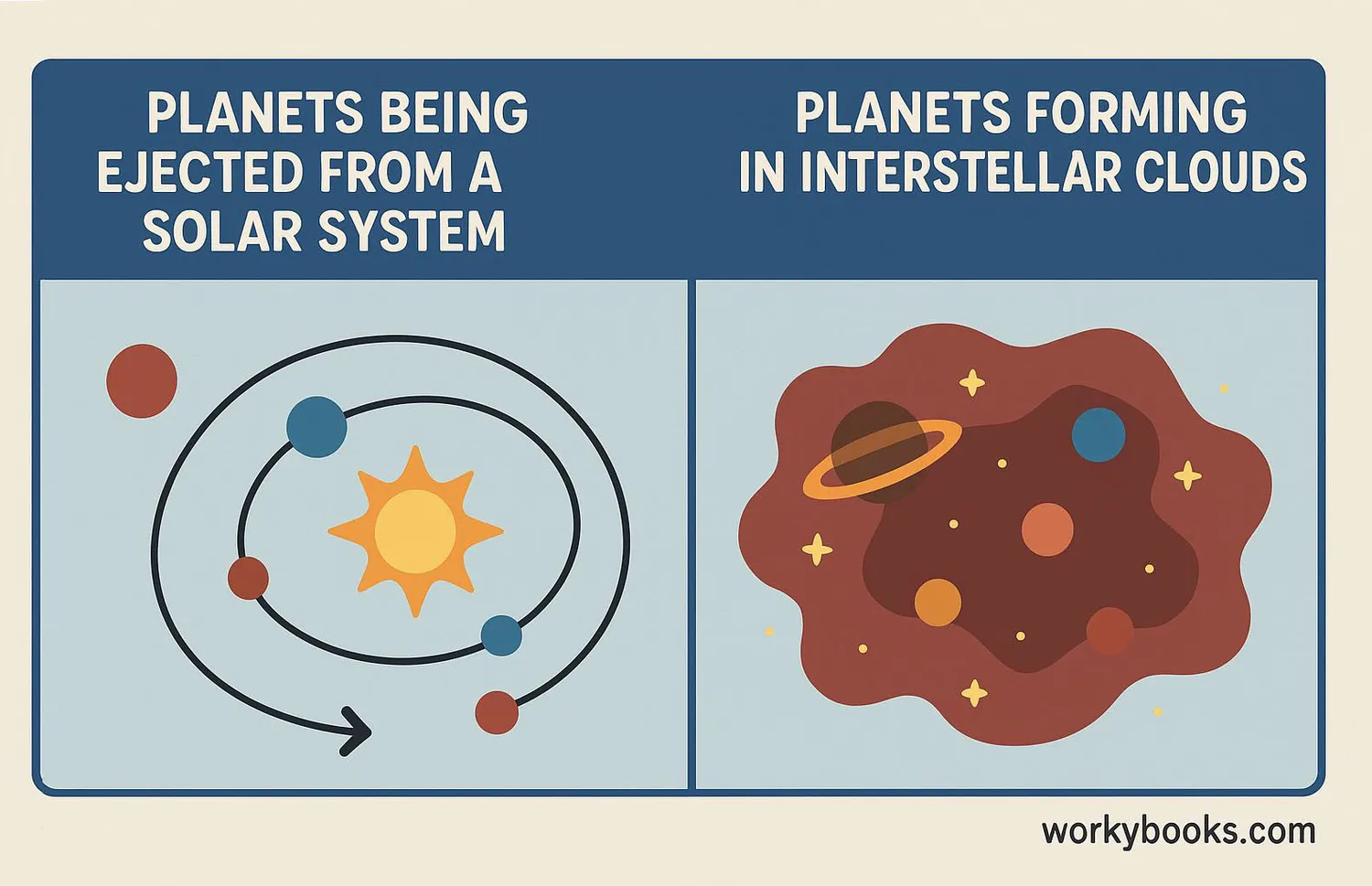Rogue Planets - Definition, Examples, Quiz, FAQ, Trivia
Discover planets that wander through space without a star!
What is a Rogue Planet?

A rogue planet is a planet that doesn't orbit any star! Unlike Earth which orbits the Sun, rogue planets wander freely through space all by themselves. They're also called:
• Free-floating planets
• Interstellar objects
• Orphan planets
• Wandering planets
These lonely planets don't have a sun to give them light or warmth, so they travel through the cold darkness of space. Scientists think there might be billions of them in our galaxy alone!
Space Fact!
The closest rogue planet to Earth might be as close as 20 light-years away. That's about 120 trillion miles!
How Do Rogue Planets Form?

Scientists have two main theories about how rogue planets form:
Ejection Theory
Planets form normally in solar systems but get thrown out by gravitational forces
Isolated Formation
Planets form directly from collapsing gas clouds in space without a star
In the ejection theory, when planets are forming in a young solar system, they can sometimes come too close to each other. The gravitational pull of larger planets can "kick" smaller planets out of the solar system entirely, sending them drifting into interstellar space.
In the isolated formation theory, rogue planets form the same way stars do - from collapsing clouds of gas and dust - but they don't gather enough material to become stars. Instead, they become planet-sized objects floating freely in space.
Gravity Game!
When large planets like Jupiter pass close to smaller planets, they can give them a "gravity boost" that sends them flying out of their solar system!
Why Rogue Planets Matter

Rogue planets are important to scientists because:
Scientific Research
They help us understand how solar systems form and evolve
Galaxy Mapping
They can help map dark matter in our galaxy
Life Possibilities
Some might have liquid water oceans under icy surfaces
Even though rogue planets don't have a sun, some scientists think they might still be able to support life! How? These planets might have:
• Thick, insulating atmospheres that trap heat
• Radioactive elements in their cores that provide warmth
• Underground oceans heated by the planet's internal heat
Studying rogue planets also helps astronomers understand how common planets are in our galaxy and how solar systems change over billions of years.
Rogue Planet Quiz
Test your knowledge about rogue planets with this quiz! Answer all 5 questions to see how much you've learned.
Frequently Asked Questions
Here are answers to some common questions about rogue planets:
Fun Rogue Planet Trivia
Discover some amazing facts about these wandering worlds!
Speedy Travelers
Some rogue planets travel through space at incredible speeds - up to 30 million miles per hour! That's fast enough to travel from Earth to the Moon in just 30 seconds!
Dark Matter Detectives
Astronomers use rogue planets to study dark matter! By observing how these planets move through space, scientists can map the invisible dark matter in our galaxy.
Coldest Places
Rogue planets are among the coldest places in the universe. Without a star to warm them, their surface temperatures can drop to -400°F (-240°C)!
Hidden Oceans
Some scientists think rogue planets might have deep underground oceans kept liquid by geothermal heat. These could potentially support microbial life!


